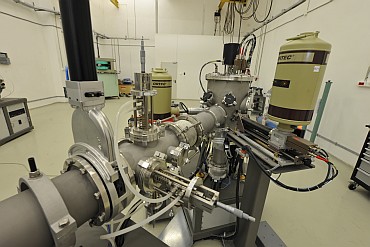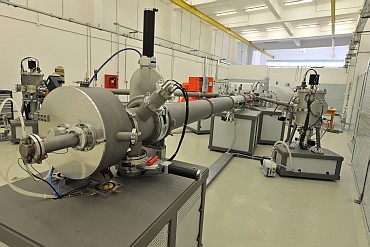
Ion beam analysis
Contact persons: Dan PANTELICA
Commissioned in 2012, the 3MV Tandetron particle accelerator allows running applicative as well as fundamental nuclear physics experiments and measurements.
This machine was custom built by High Voltage Engineering B.V., the envisaged experiments being the IBA (Ion Beam Analysis)
measurements, various topics in astrophysics, as well as ion implantation and material science.
Description
Ion Beam Analysis (IBA) provides an excellent way to probe atomic compositions and concentrations in various materials. The dynamic range of the elemental
concentration is generous, almost all types of atoms within the probed material are identifiable with respect to concentration or depth profiles.
IBA is an excellent tool in analysing a wide range of samples, from new materials, precious metal alloys, cultural heritage objects, biomaterials
and biological samples to advanced materials like superlattices developed in nano-electronics.
Application domains
(material engineering, nano-electronics, ecology, medicine, cultural heritage, conventional and nuclear forensics, new materials)
The analytical techniques applicable at the 3MV Tandetron can offer precise information over the elemental composition and concentration or elemental
distribution in atomic network and layers. With respect to this, the 3MV Tandetron can be used as a powerful tool in a wide range of research fields,
as:
Main advantages
IBA techniques are characterized by high precision and reliability. In most cases, the samples don't need any chemical or physical preparation
before analysis, fast direct analysis being available under vacuum conditions or outside the reaction chamber, in air or under He atmosphere
measurement in order to improve precision of the results. The main advantage of this technique is considered to be its non-invasive profile,
making it excellent for biological and fragile samples.
Keywords
Ion beam analysis, IBA, RBS, RBS-C, PIXE, PIGE, NRA, thin films, atomic analysis, material analysis, cultural heritage, forensics, medicine.
